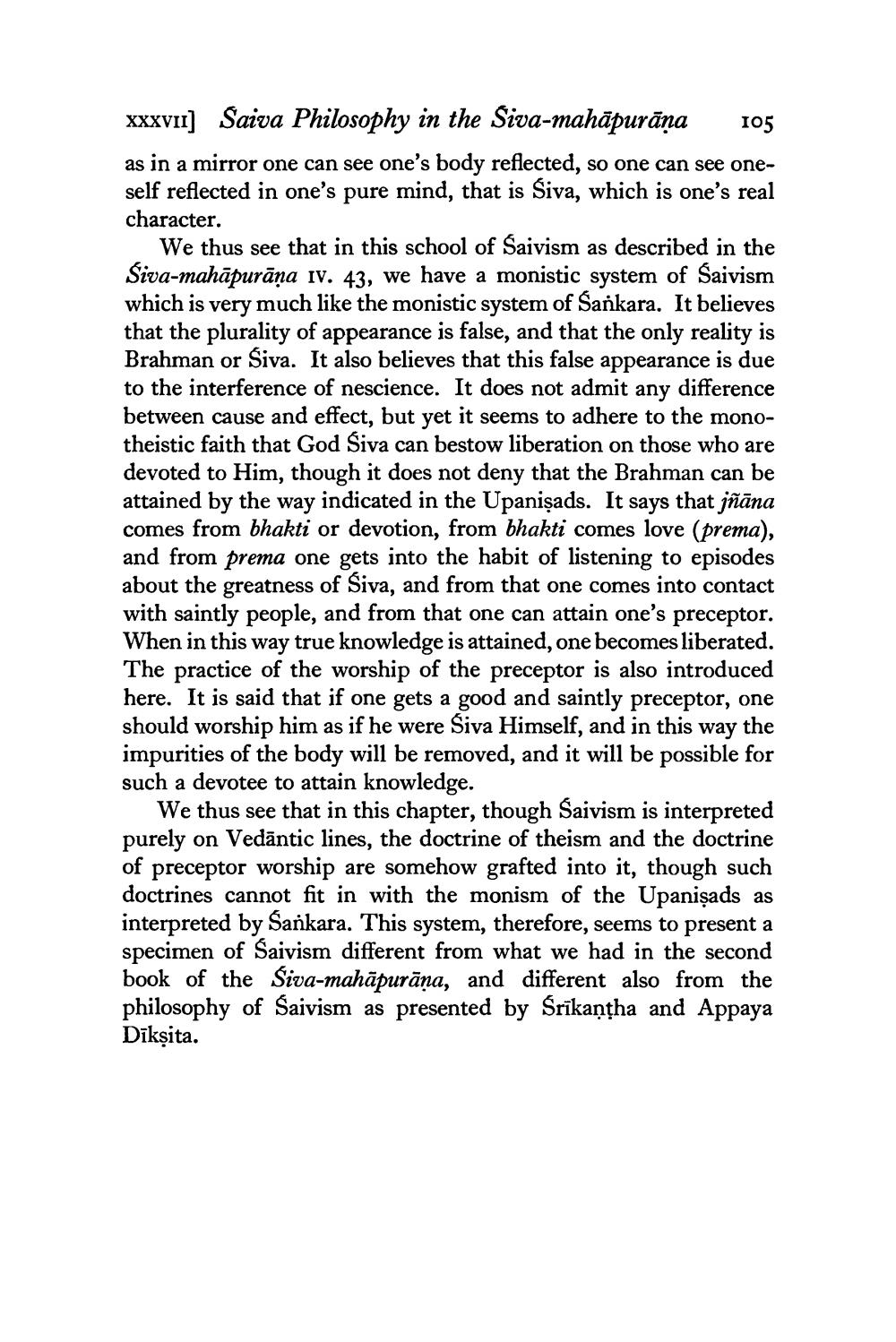________________
XXXVII] Saiva Philosophy in the Siva-mahāpurāņa 105 as in a mirror one can see one's body reflected, so one can see oneself reflected in one's pure mind, that is Siva, which is one's real character.
We thus see that in this school of Saivism as described in the Siva-mahāpurāņa iv. 43, we have a monistic system of Saivism which is very much like the monistic system of Sankara. It believes that the plurality of appearance is false, and that the only reality is Brahman or Siva. It also believes that this false appearance is due to the interference of nescience. It does not admit any difference between cause and effect, but yet it seems to adhere to the monotheistic faith that God Siva can bestow liberation on those who are devoted to Him, though it does not deny that the Brahman can be attained by the way indicated in the Upanişads. It says that jñāna comes from bhakti or devotion, from bhakti comes love (prema), and from prema one gets into the habit of listening to episodes about the greatness of Siva, and from that one comes into contact with saintly people, and from that one can attain one's preceptor. When in this way true knowledge is attained, one becomes liberated. The practice of the worship of the preceptor is also introduced here. It is said that if one gets a good and saintly preceptor, one should worship him as if he were Siva Himself, and in this way the impurities of the body will be removed, and it will be possible for such a devotee to attain knowledge.
We thus see that in this chapter, though Saivism is interpreted purely on Vedāntic lines, the doctrine of theism and the doctrine of preceptor worship are somehow grafted into it, though such doctrines cannot fit in with the monism of the Upanisads as interpreted by Sankara. This system, therefore, seems to present a specimen of Saivism different from what we had in the second book of the Siva-mahāpurāna, and different also from the philosophy of Saivism as presented by Śrīkantha and Appaya Dīkṣita.




